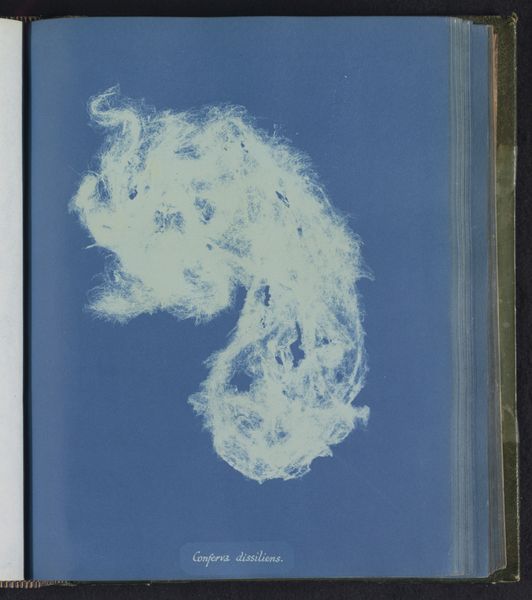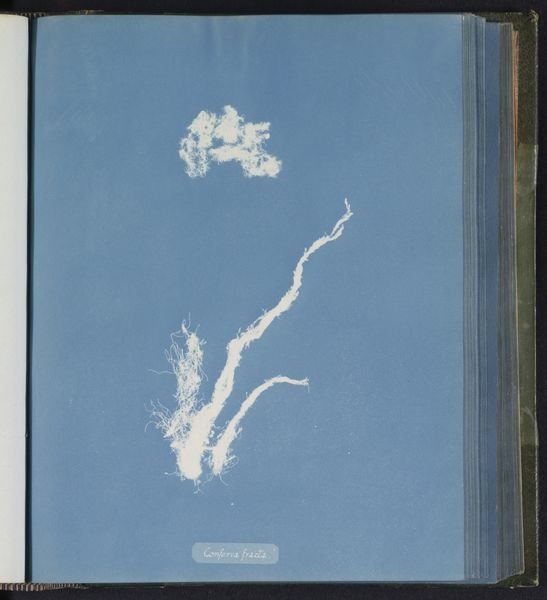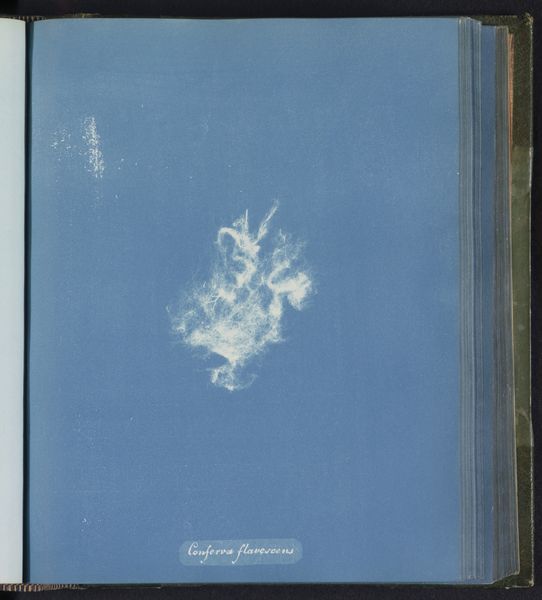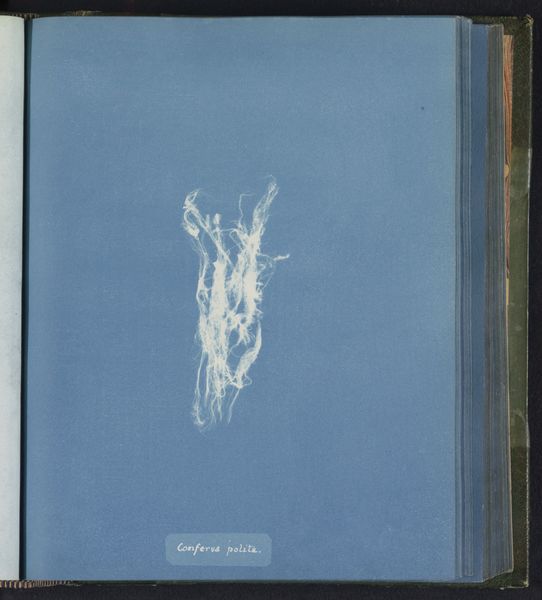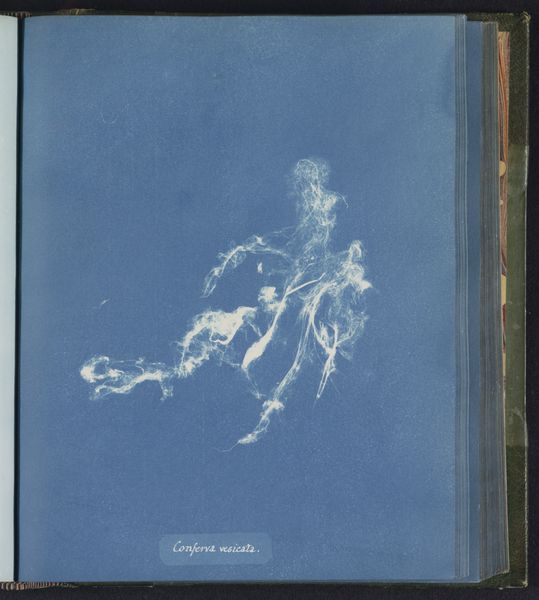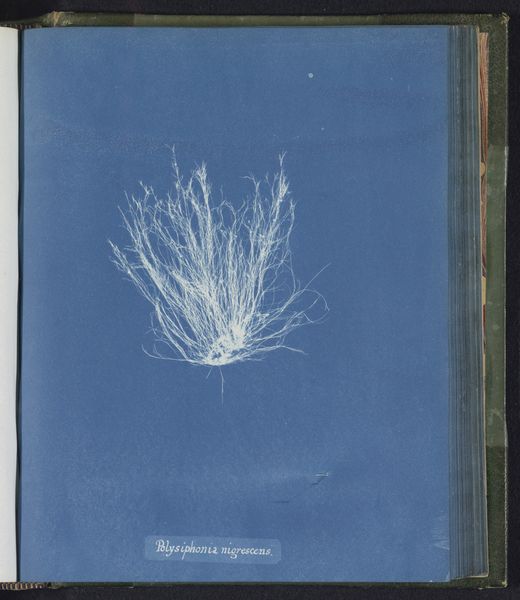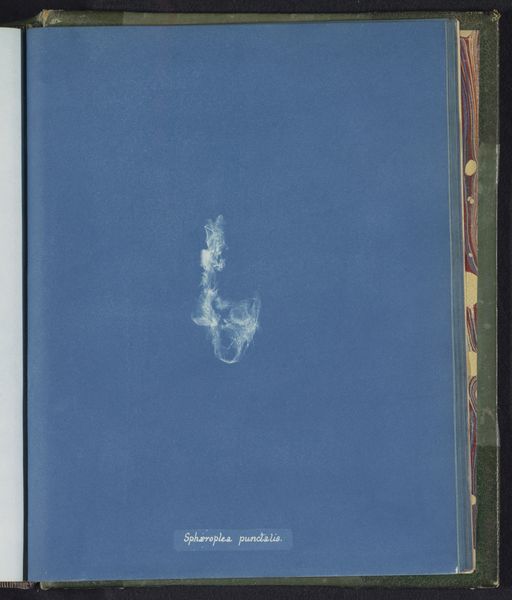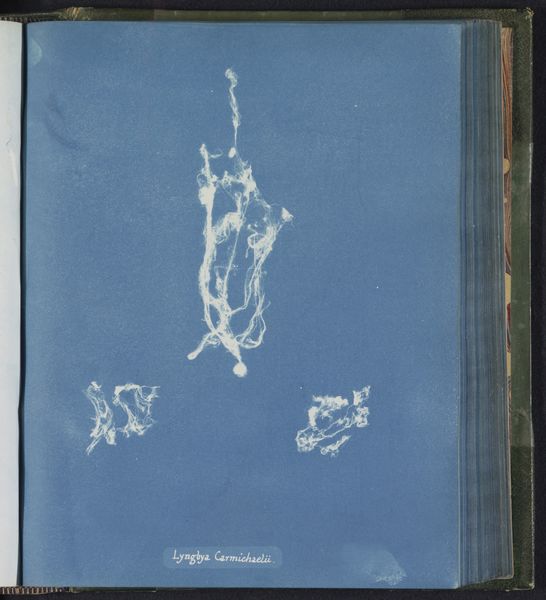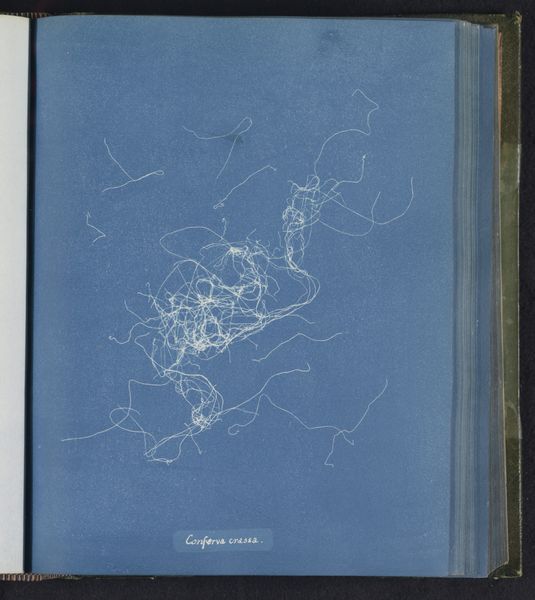
#
small typography
#
personal journal design
#
personal sketchbook
#
book mockup
#
coloured pencil
#
publication mockup
#
watercolour illustration
#
delicate typography
#
sketchbook art
#
watercolor
Dimensions: height 250 mm, width 200 mm
Copyright: Rijks Museum: Open Domain
This photogram of algae, called Chondrus crispus, was made by Anna Atkins in the mid-19th century, using a process called cyanotype. Instead of traditional art materials, Atkins used photosensitive chemicals and sunlight, turning a scientific process into art. She placed the algae directly onto specially treated paper and exposed it to sunlight. The areas covered by the algae blocked the light, resulting in a white silhouette against a deep blue background. The cyanotype process, though scientific in origin, allowed Atkins to create delicate and detailed images, revealing the intricate structure of the algae. It was a labor-intensive process, demanding careful preparation of the paper and precise timing of the exposure. Atkins' work blurred the lines between science and art, demonstrating the aesthetic potential of scientific processes and challenging traditional notions of artistic skill and creativity. By focusing on process and materiality, Atkins elevated the status of photography, at a time when it was not considered a traditional art form, to a new means of creative expression.
Comments
No comments
Be the first to comment and join the conversation on the ultimate creative platform.

